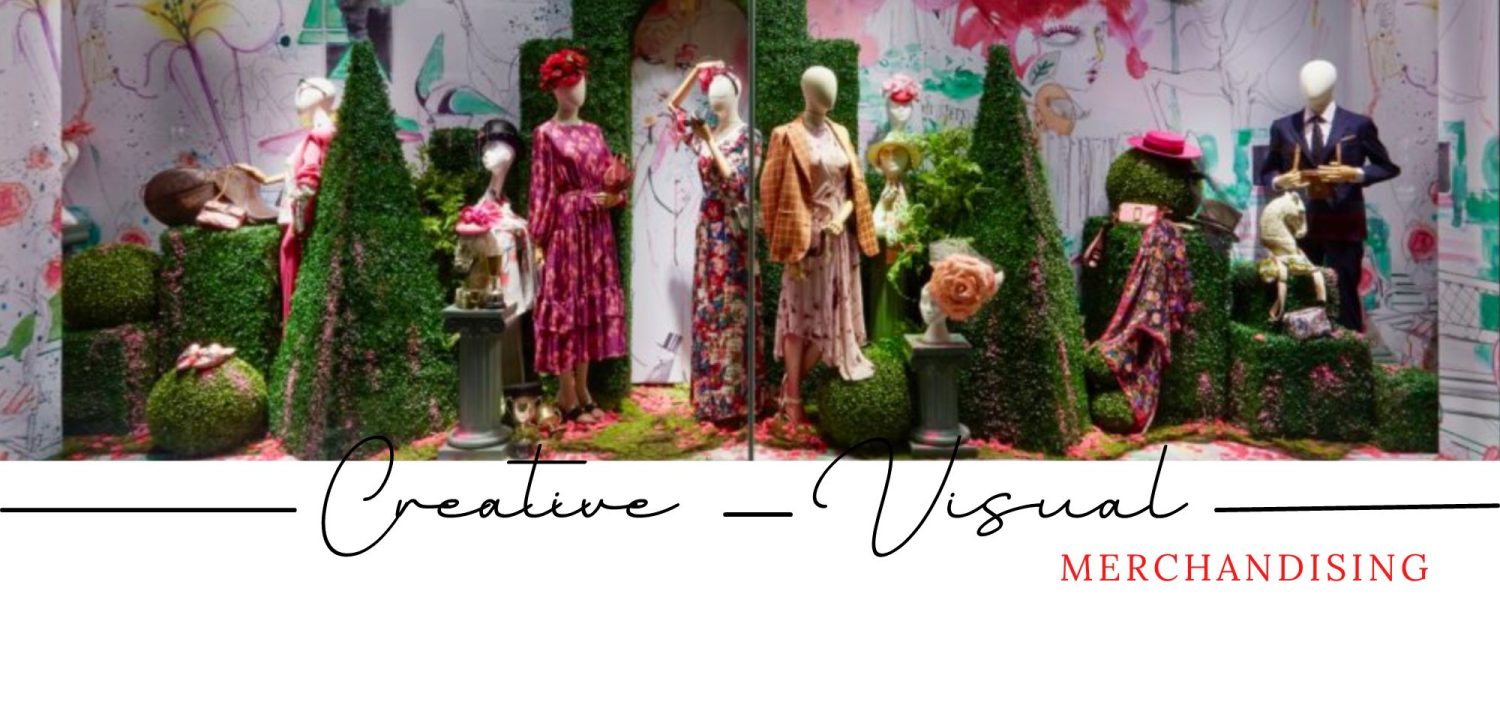Creative Visual Merchandising
Creative visual merchandising is the art of presenting products in a visually appealing and engaging way to attract and captivate customers. It involves using a variety of visual elements, such as color, lighting, props, and displays, to create a unique and memorable shopping experience that encourages customers to make purchases. Creative visual merchandising can be used in both physical and digital retail environments, and it plays a crucial role in building a brand’s identity and establishing a strong connection with customers. The goal of creative visual merchandising is to create a space that not only showcases products but also tells a story and communicates the brand’s values and personality to customers.
What is merchandising?
Merchandising refers to the process of promoting and selling products through effective presentation, pricing, and promotion. It involves various activities such as selecting and sourcing products, setting prices, creating displays, and developing promotional strategies to attract customers and increase sales. Merchandising plays a crucial role in retail and other industries, as it helps businesses to showcase their products in the most appealing way possible to drive customer engagement, create brand loyalty, and increase revenue. Effective merchandising requires a deep understanding of customer behavior and market trends, as well as a well-coordinated effort between different teams such as marketing, sales, and operations.
Creative visual merchandising trends
Creative visual merchandising is a crucial aspect of retail marketing, which involves the presentation of products in an aesthetically pleasing and engaging manner to attract and retain customers. The following are some current trends in creative visual merchandising:
- Personalization: One of the most prominent trends in creative visual merchandising is personalization. Retailers are increasingly using data-driven insights to understand their customers’ preferences and create personalized shopping experiences that resonate with them.
- Interactive displays: Interactive displays are another emerging trend in creative visual merchandising. Retailers are using technology such as augmented reality (AR) and virtual reality (VR) to create immersive shopping experiences that allow customers to interact with products in a unique way.
- Sustainability: Sustainability is an increasingly important consideration in visual merchandising. Retailers are incorporating eco-friendly materials and highlighting their sustainable practices to appeal to environmentally conscious customers.
- Minimalism: Minimalism is a popular trend in creative visual merchandising, characterized by simple and uncluttered displays that emphasize the products themselves. This approach can create a sleek and modern look that appeals to customers looking for a more refined shopping experience.
- Pop-up shops: Pop-up shops are temporary retail spaces that allow brands to create unique and engaging shopping experiences. These spaces are often used for product launches, special events, or to test out new markets.
- In-store events: Hosting in-store events is a creative way to engage customers and create a unique shopping experience. Events such as product launches, fashion shows, and workshops can generate excitement and draw in new customers.
Overall, creative visual merchandising trends are constantly evolving as retailers seek to create engaging and memorable shopping experiences for their customers.
Best creative visual merchandising trends of 2022 and 2023
However, some of the best creative visual merchandising trends in recent years include:
- Interactive displays – using technology like touch screens, augmented reality, and virtual reality to engage customers and create an immersive experience.
- Sustainability – incorporating eco-friendly materials and highlighting sustainable practices in visual displays to appeal to socially-conscious consumers.
- Personalization – creating tailored experiences for individual customers through the use of data-driven insights and customization options.
- Pop-up shops – temporary, limited-time retail spaces that create a sense of urgency and exclusivity for customers.
- Social media integration – using social media platforms to showcase products and designs, and encouraging customers to share their experiences on social media.
- Minimalism – a focus on simplicity, using clean lines and neutral colors to create a modern and sophisticated aesthetic.
- Art installations – incorporating art pieces into visual displays to add an element of creativity and interest.
- In-store events – hosting events and workshops in-store to build customer loyalty and create a sense of community around the brand.




